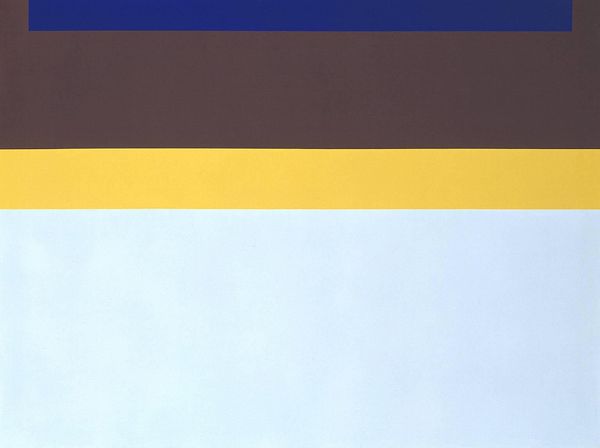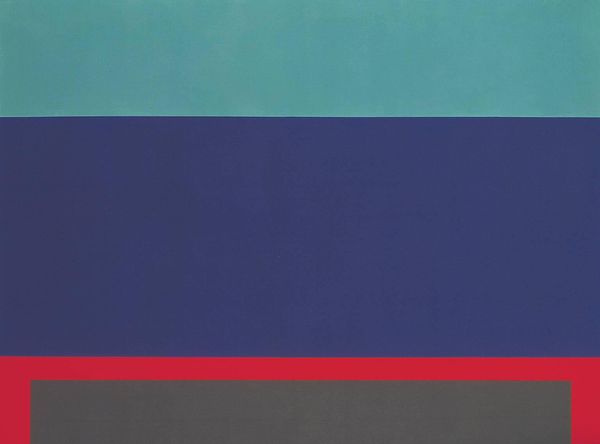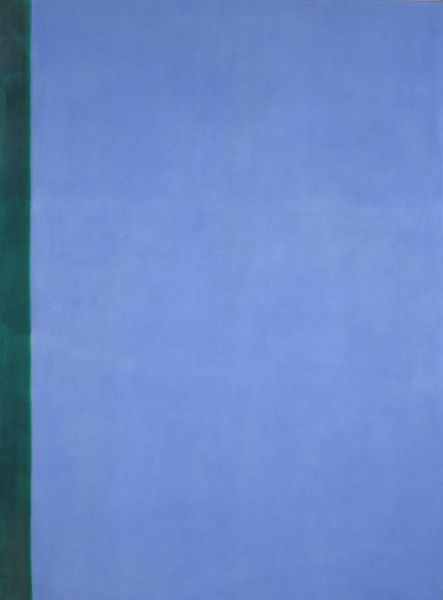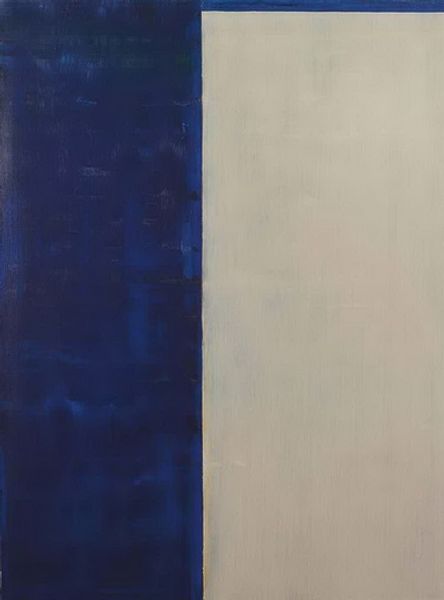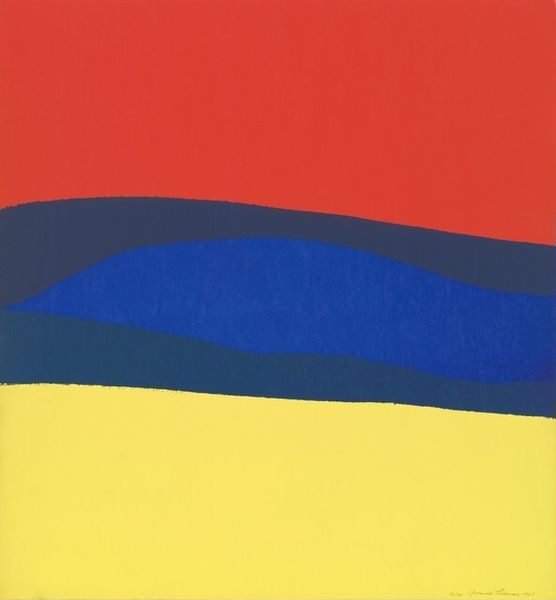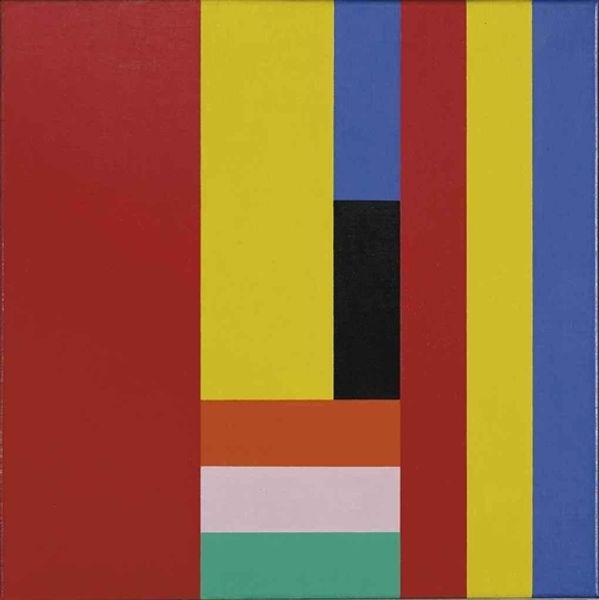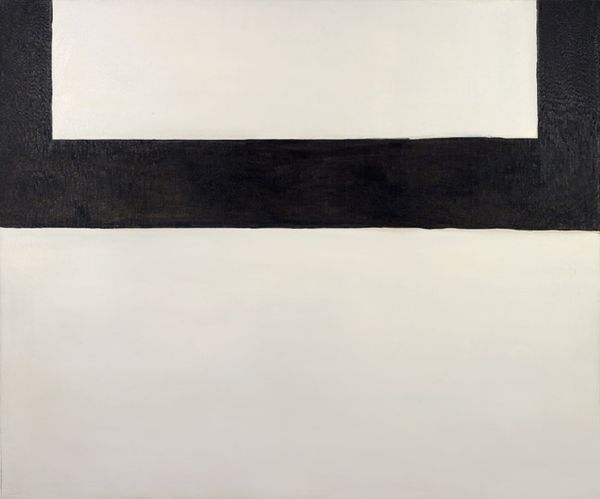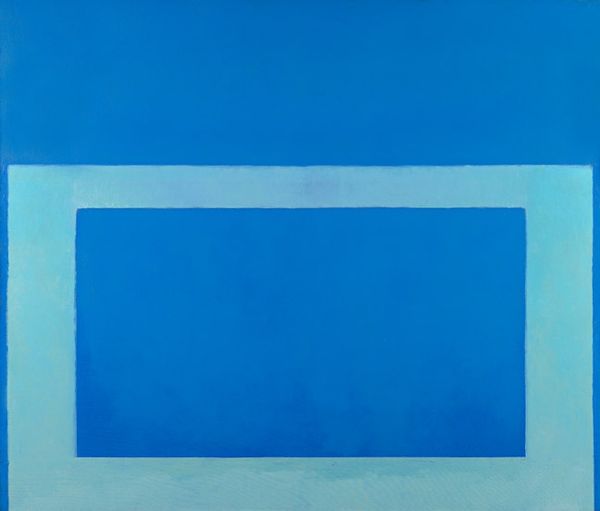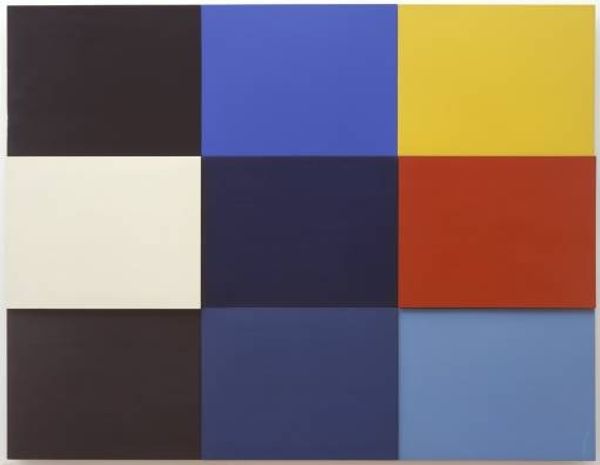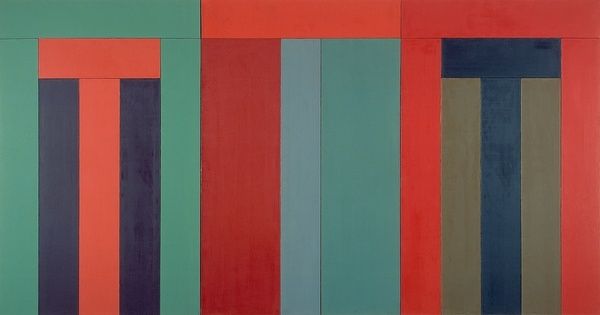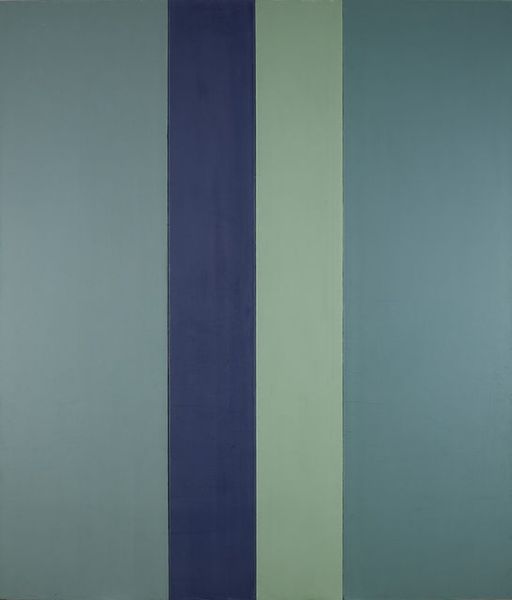![[no title] by Jean Spencer](/_next/image?url=https%3A%2F%2Fd2w8kbdekdi1gv.cloudfront.net%2FeyJidWNrZXQiOiAiYXJ0ZXJhLWltYWdlcy1idWNrZXQiLCAia2V5IjogImFydHdvcmtzLzNkMmZiMGYxLTYyMzAtNDQzMy05MzFjLTg0YTMwYTkxZDUwZS8zZDJmYjBmMS02MjMwLTQ0MzMtOTMxYy04NGEzMGE5MWQ1MGVfZnVsbC5qcGciLCAiZWRpdHMiOiB7InJlc2l6ZSI6IHsid2lkdGgiOiAxOTIwLCAiaGVpZ2h0IjogMTkyMCwgImZpdCI6ICJpbnNpZGUifX19&w=3840&q=75)
Dimensions: support: 1127 x 1501 x 22 mm
Copyright: © Tate | CC-BY-NC-ND 4.0 DEED, Photo: Tate
Curator: Standing before us is an untitled work by British artist Jean Spencer, who was born in 1942 and passed away in 1998. The artwork is currently housed in the Tate Collections, featuring dimensions of 1127 by 1501 by 22 millimeters. Editor: It's strikingly serene, isn't it? The horizontal blocks of color, the balance of the palette...it feels like a visual meditation on the horizon. Curator: Spencer was deeply engaged with American abstract expressionism, particularly the color field painters like Rothko. But there's a cooler, more restrained quality here. Editor: Yes, I see that. The choice of blue, green, yellow, and gray evokes a sense of melancholy, or perhaps even a quiet resignation. But there's also something grounding about the composition, something stable in the arrangement of the colors. Curator: Absolutely. This work emerged during a period of significant social and political upheaval. Spencer, like many artists of her generation, was grappling with questions of identity and purpose. Editor: It's amazing how these colors, these simple shapes, can carry such a weight of history and emotion. Curator: Indeed. This piece serves as a window into a particular moment in time and also speaks to enduring human experiences. Editor: I’ll be thinking about this horizon for some time to come, and the feelings it evokes.
Comments
No comments
Be the first to comment and join the conversation on the ultimate creative platform.
